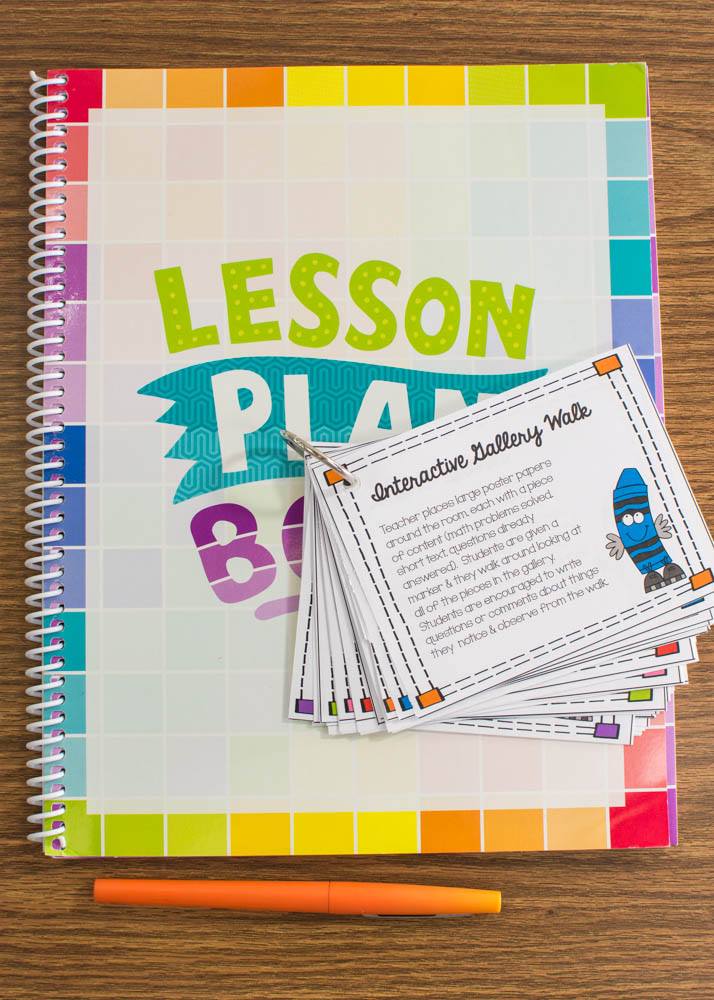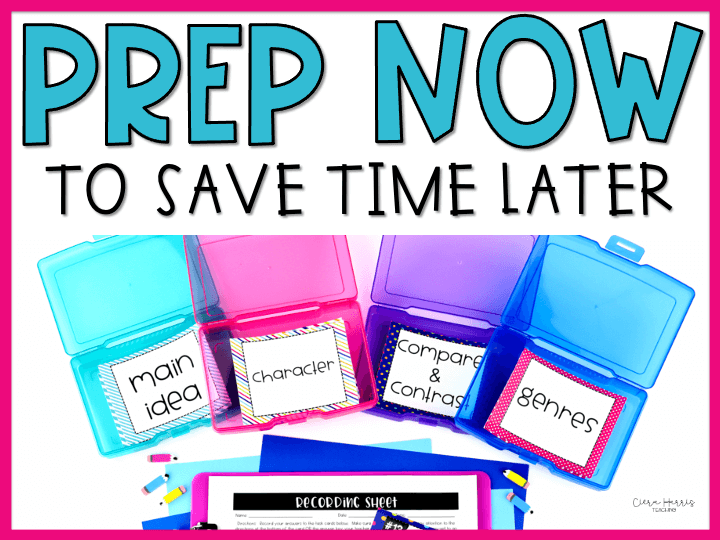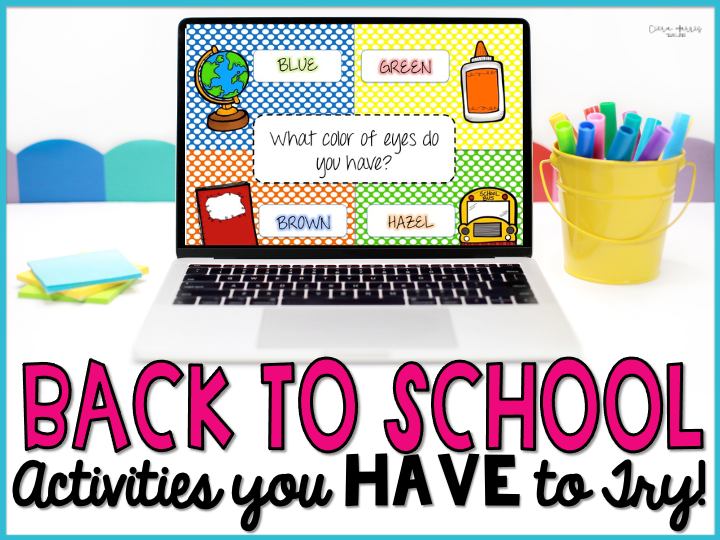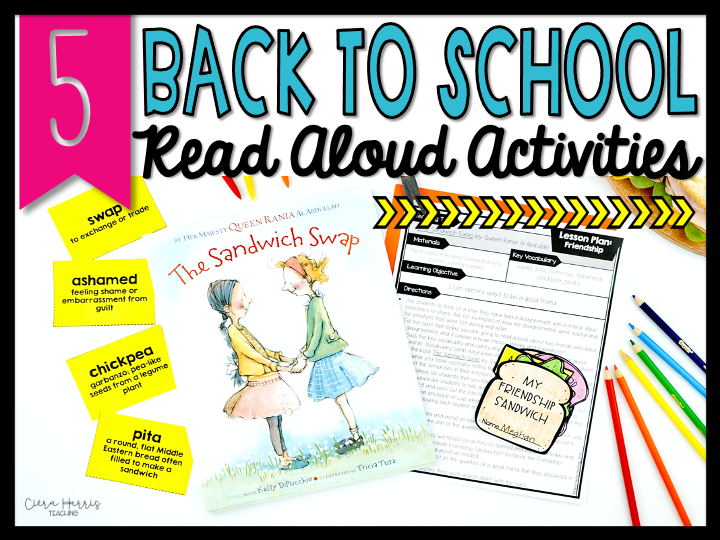Lessons are absolutely the heartbeat of the classroom. A strong lesson takes time, thinking, data, and a balance of instructional strategies. In my years in the classroom, my goal was to perfect my lesson planning process. I wanted to narrow down exactly what was and wasn’t needed in my plans in order for my students to be successful. I have come up with ELEVEN lesson plan essentials that I feel should belong in every lesson plan. Let’s dive in and see what they are!

Want to watch the video instead? Check it out below! Make sure to subscribe to get updates on all new content!
Lesson Plan Essential #1: Have an Objective
I know, I know. Don’t laugh at me! I know there are many teachers who do not believe that objectives are relevant or important. That they are just something that admin dictates them to have. But I completely believe in the power of having an objective for each and every lesson. Why? First off, having an objective forces you to pinpoint a specific skill to focus on. The objective allows you to know what you’re measuring your students on. It allows you to align all activities and questions.
Without an objective, students are actually less focused! An objective tells the students what their brains need to be focused on throughout the lesson. It gives them an end goal. Remember, the lesson plan and objective isn’t for you – it’s for the students!
Lesson Plan Essential #2: Modeling
No, I don’t mean modeling as in flash photography and beautiful, tall people. 😉 Clearly! I’m referring to the opportunity that you have at the beginning of each and every lesson you do to showcase the thinking necessary behind mastering the objective at hand. Modeling is YOUR time to shine. Modeling should not include students in any way. Students need to see, hear, and watch the entire process of the objective from beginning to end. They need to hear YOUR thinking, questions, mistakes, and ah-ha’s. This is the students’ chance to peek inside your brain!
A model should only be 3-4 minutes in length. Any longer and we risk students losing focus. I always tell my students WHEN I begin my model. This tells them it’s time for them to watch intentionally, listen, and learn. It also tells them to turn voices off and it’s my time to talk! Having a very clear and concise model can make or break your lesson! Check out these tips on perfecting your model in your lessons!
Lesson Plan Essential #3: Follow a Routine
We all know kids do well with a routine. Heck, even I do! So inside my lesson (30-40 minutes), I want to give my students a predictable routine to follow so they know what to  expect. What’s my routine? I use the gradual release of responsibility! If you’re not familiar, the gradual release of responsibility is also known as the ‘I do, We do, and You do’. This may be an ‘older’ practice, but it’s one that WORKS!
expect. What’s my routine? I use the gradual release of responsibility! If you’re not familiar, the gradual release of responsibility is also known as the ‘I do, We do, and You do’. This may be an ‘older’ practice, but it’s one that WORKS!
Why? It provides students a routine that they can predict. Students know that I will always be modeling at the beginning of our lesson (I Do). They know that we will have two practices in the middle – one together that’s guided and one with a partner or a small group (We do). The students also know that we will end every lesson by showcasing their thinking in some way (You do).
This process not only helps them, but it helps me to plan as well.
Lesson Plan Essential #4: Working Backwards
This is a practice that should be done not only in lesson planning but also in planning out larger units. As teachers, we need to know the end result before we begin. We need to know what we expect of our students before we teach. Doing this in lesson planning is important as well!
By working backward, we are able to know what we expect of our students and then use this information in our modeling and guided practice. We are able to answer the question, ‘How am I going to get there?’ and create an action plan. Then use it to teach our students. This is also important for aligning our activities and expectations. If at the end of the lesson, I want the students to be able to fill in a graphic organizer for a specific skill, then that’s what I should be practicing in the guided practice. That’s what I should be modeling at the beginning. Having an end in mind keeps everything aligned and focused.
Lesson Plan Essential #5: Manageable Chunk of Learning
We all know that slow and steady wins the race. The same is true in teaching. I’ve coached many teachers who have fantastic lessons. But then when they give the exit ticket, the students don’t do too well. A follow-up question I ask is “Was it a manageable chunk of learning to take in?” In a lesson, it’s very easy to bite off more than our students can chew. When planning, it’s important to think about whether or not what we are presenting in the given time frame is too much, too little, or just right. Having too much information can be overwhelming for students.
With every skill we teach, there’s a lot that goes into play. Each skill has components and pieces that need to be broken down. Each skill has prerequisites that must be solid before jumping in. This is why I developed my approach to teaching comprehension. The building comprehension approach is a 5 step process that takes students through exposing the material, analyzing the material, evaluating the material, preparing for application, and finally full application. I use this process in teaching ANY reading skill or strategy and it works BECAUSE I’m giving students manageable chunks of learning! Check out more information about my Building Comprehension approach!
Lesson Plan Essential #6: Alignment
One of the biggest problems teachers can have in a lesson is straying off task and losing focus. This is why, when lesson planning, it’s so important to make sure everything we plan to do and ask aligns with the objective we have chosen for the lesson. All questions I ask and every activity I do should be comprised of the objective and only the objective. Straying off can cause confusion, misbehavior, and eventually time issues. We only have so much time for this lesson. We want our objective met in this lesson. Taking time to stray off task due to lack of alignment not only sucks time out of our lesson but also gives room for other issues as well.
Lesson Plan Essential #7: 100% Participation
At the end of every lesson, we should be able to say that 100% of our students had the chance to talk, showcase their thinking in some way, and ask questions. Raising hands doesn’t cut it anymore. I want to make sure all of my students are involved in the conversation, not just the students I call on. There are so many amazing classroom discussion strategies out there that help get all students talking. Be better than the turn and talk, do some research, and make sure at the end of your lesson that everyone has had the chance to showcase their thinking in some way and that you have had to listen to each student in some way as well.
Lesson Plan Essential #8: Talk Less Than Students
Who is this lesson for? It’s for the students, right? We need to remember this when we are up in front of the class talking endlessly about the topic. To ensure they get the chance  to talk more than you, use conversational strategies or engagement strategies like the fishbowl or inside-outside circles. The more students talk, the more they take in, listen, and remember.
to talk more than you, use conversational strategies or engagement strategies like the fishbowl or inside-outside circles. The more students talk, the more they take in, listen, and remember.
Lesson Plan Essential #9: Complex Questions
We need to stop playing the game of ‘guess what’s in my head’. What’s this game? It happens when we ask a very simple, one-sided question that doesn’t take actual thought to answer. It’s a remembering game. Instead, we will get more out of our time and out of our students by asking the questions that really make students think! These open-ended questions are questions that have more than one answer. They are the types of questions that will only get 1-2 hands in the air. It’s okay to ask these questions! By taking the time to analyze and answer more complex questions, you’re essentially answering all of the small, one-sided questions in the process PLUS giving the students a chance to think deeply about the content.
And if you’re anything like me, then you can’t come up with these questions on the spot. I always have to pre-think through my deep questions while lesson planning to ensure I have strong questions to ask and to make sure I even remember to ask them! So if you’re like me, that’s okay! Just get into the routine of doing this to help train yourself.
Lesson Plan Essential #10: Independent Work
If you go through the time to teach an entire lesson and then end it without taking some sort of data from the students, why did you teach the lesson in the first place? I know there’s not a teacher out there that can remember the ins and outs of every single student in their class from lesson to lesson. It’s too hard! This is what exit tickets are for! You need this data. This exit ticket doesn’t have to be a lot of work. It can simply be one question answered on a sticky note and turned in for you to analyze.
The point is, for every lesson you do, there needs to be a chance for the students to showcase their thinking they have acquired during the lesson. It’s important for them to show their growth and it’s important for you to have data to go off of for your next lesson.
Lesson Plan Essential #11: Differentiation
Don’t be discouraged by the ‘D’ word! Differentiation doesn’t have to be scary! Differentiation doesn’t mean you do a completely different lesson or activity for different groups of students. It means that you are taking some sort of action to support the students who need it. You do this through your modeling, scaffolding of the activity, the questions you ask, etc. There are lots of different differentiation strategies that you can try that don’t take tons of time and effort!
Want to save this for later? Pin the image below!






